Explore down payment assistance
Anúncios
Buying a home can feel like a huge leap, especially when you’re juggling everyday expenses and trying to gather a hefty down payment. You’re not alone if you’re worried about affording that initial purchase cost. According to the National Association of REALTORS®, 38% of first-time buyers cited saving for a down payment as the toughest step in the entire homebuying process (National Association of REALTORS®). The good news is that there are solutions out there to help you bridge that financial gap. One of the most powerful tools at your disposal is “down payment assistance programs.” These initiatives can reduce or even eliminate upfront costs, letting you transition from renting to owning much sooner than you might expect.
In this ultimate guide, you’ll learn how these programs work, discover key benefits, and find practical tips to enhance your approval odds. By the end, you’ll see just how accessible homeownership can be.
A quick promise of value
Here’s what you’ll get by reading to the end:
- A firm grasp of different support programs and how they boost your purchasing power.
- An understanding of eligibility requirements, so you can quickly zero in on the best options for you.
- Step-by-step guidance for applying and navigating these programs with confidence.
So let’s dive in, detail by detail, and move you closer to a future that includes a place you can call your own.
Recognize key benefits
Before we dig into specific requirements and program types, let’s highlight the top reasons you should care about these supportive pathways.
-
Lower upfront costs
Assistance grants or loans can significantly reduce your out-of-pocket expense when you close on a home. That means less strain on savings and credit cards. -
Access to better loan terms
A bigger down payment often helps you get lower interest rates. In some cases, it may also eliminate private mortgage insurance (PMI), reducing monthly costs even more. -
Chance to qualify for a pricier home
If you need less of your own cash at closing, you might be able to afford a property with extra space or a better location—still without busting your budget. -
Homeownership made possible for more buyers
Many assistance programs target low- to moderate-income households and first-time buyers. These resources expand the pool of potential homeowners beyond those with large savings. -
Helps break the renting cycle
Being stuck in a rental can sap your monthly budget without building any real equity. By using these programs, you’re investing in a property that could increase in value over time and become a firm financial foundation for your future.
Explore different program types
There isn’t just one way to get help with a down payment. In fact, you’ll find several options, each with its own rules and benefits. Here are some of the most common types that could make a massive difference in your homebuying journey:
Grants
- Definition: A one-time financial award that generally doesn’t need to be repaid.
- Upside: Think of it like a gift. Because you’re not required to pay it back, your monthly mortgage payment remains unaffected by additional debt.
- Potential drawback: Grants can come with income or location restrictions.
Forgivable loans
- Definition: A loan that can be “forgiven” after you meet certain conditions, such as living in the home for a specific number of years.
- Upside: If you stay put long enough, your loan balance is wiped away.
- Potential drawback: If you sell too early, you’ll have to repay some or all of what you borrowed.
Deferred-payment loans
- Definition: A down payment loan with delayed repayment. Often these are not due until you move, refinance, or pay off your primary mortgage.
- Upside: No extra monthly burden, since repayment isn’t immediate.
- Potential drawback: The loan must be settled eventually, which could be a challenge if you plan to move within a few years.
Low-interest loans
- Definition: Traditional loans with favorable interest rates that you use specifically for your down payment.
- Upside: Easier to budget for repayment, since the rate is lower than most standard loans.
- Potential drawback: You still have an extra loan to factor into your monthly and long-term finances.
Matched savings programs
- Definition: A program where your savings contributions are “matched” by an organization, such as a housing agency or nonprofit.
- Upside: You get free money for every dollar you deposit in a dedicated account, speeding up your progress.
- Potential drawback: Usually requires consistent, disciplined savings over a set period.
Together, these options form a robust lineup to help you lighten your financial load. As you read on, think about which one best fits your situation and homeownership goals.
Understand eligibility requirements
Not everyone will qualify for every type of aid, so it’s important to know the main factors that might affect your chances.
-
Income limits
Many programs are designed for low- to moderate-income buyers. The cap depends on where you live and how many people are in your household. -
Credit score thresholds
You’ll typically need a minimum credit score of around 620, though some programs or lenders may have more flexible criteria. -
First-time homebuyer status
This can mean you haven’t owned a principal residence in the past three years. Interestingly, about 39% of these programs are also open to repeat buyers, so it’s not always an automatic disqualifier if you’ve owned a home before. -
Property location
Some programs focus on specific cities or counties, while others apply statewide or even nationwide. -
Primary residence requirement
In most cases, you have to live in the home you purchase. If you plan to turn it into a rental property, you might not qualify. -
Homebuyer education
You may need to complete a short course offered by a Department of Housing and Urban Development (HUD)-approved counseling agency. While it’s one more item on your to-do list, these courses can be incredibly enlightening, covering crucial topics like budgeting and mortgage basics.
Understanding these basics helps you sort through the offerings quickly. Once you see a program that checks your boxes, you can target it more confidently.
Learn about the Ohio Housing Finance Agency (OHFA)
Some of the most notable initiatives in the U.S. are run by state-level agencies. If you’re in Ohio, for example, the Ohio Housing Finance Agency (OHFA) stands out for its supportive structures.
-
30-year fixed-rate mortgage options
OHFA offers conventional, FHA, VA, or USDA-RD loans. These come with generous income and purchase price limits to help low- and moderate-income buyers. -
Down Payment Assistance from OHFA
You can get 3% for conventional loans or 3.5% for government loans as help toward closing costs or your upfront payment. It’s forgiven after seven years, but if you sell the home before that point, you’ll need to repay it. -
Homebuyer education requirement
Qualified buyers must complete a free homebuyer course from a HUD-approved counseling agency in Ohio. This training helps prepare you for the financial responsibilities of owning a home and might also open doors to additional resources. -
Ongoing support
Once you’re an OHFA homeowner, you can access tools and resources to maintain and improve your property. There’s even an opportunity for those who finish the homebuyer education to join research studies with The Ohio State University, testing new features and strategies for successful homeownership. -
Local lender network
OHFA works with several credit unions, banks, and mortgage companies across Ohio. You can find an approved lender in your town or call 888.362.6432 for more details.
Even if you don’t live in Ohio, knowing how such a statewide initiative functions can help you recognize similar opportunities in your own state. Many follow a similar blueprint, offering a combination of loans, grants, or partnered services that make property ownership far more accessible than you ever imagined.
Compare assistance options
Since we talked about multiple types of support, let’s put them side by side in a quick table. This comparison offers a snapshot of how each solution can benefit you and points out any extra considerations you should keep in mind.
| Program Type | Do You Repay? | Key Pros | Notable Cons |
|---|---|---|---|
| Grant | No | – No ongoing payments – Reality check: free money is always awesome |
– Typically smaller amounts – Strict eligibility criteria |
| Forgivable Loan | Potentially, if you sell or move out within the forgiveness period | – If you meet the program’s living requirement, you pay nothing back – Can reduce monthly mortgage cost long-term |
– Must remain in the home for a set term – Might face repayment if you change residences too soon |
| Deferred-Payment Loan | Yes, but only when you refinance, move, or fully pay off the mortgage | – Doesn’t add to your current monthly bills – Leaves breathing room in your monthly budget |
– Repayment could come due at a financially inconvenient time |
| Low-Interest Loan | Yes, in monthly installments | – Friendly interest rates lower your total payoff – Can help if you have decent credit |
– You still carry an additional debt – Could lengthen your payoff timeline |
| Matched Savings Program | No direct repayment, but requires regular savings contributions until you meet program goals | – Boosts your own savings by matching funds – Encourages consistent saving habits |
– Program might demand a set deposit schedule – Lesser immediate impact compared to a grant |
Reviewing this table should give you a clearer sense of whether you’d prefer a straightforward grant, the flexibility of a deferred-payment loan, or something else entirely. The right choice will hinge on your specific financial situation, your short- and long-term plans, and the guidelines of each program where you live.
Navigate the application process
Applying for down payment assistance is not dramatically different from applying for a traditional mortgage. There are, however, a few more steps and documents to juggle. Here’s a general walkthrough:
- Check your finances
- Review your credit reports for errors.
- Pull together an approximate budget using a home affordability calculator.
- Identify any major debts that might raise your debt-to-income ratio.
- Research suitable programs
- Look up state housing agencies or local nonprofits.
- Check the program’s websites for income and credit score requirements.
- If you’re interested in an OHFA initiative and you’re in Ohio, call 888.362.6432 or visit OHFA online.
- Contact an approved lender
- Seek out a lender familiar with these assistance options.
- Ask for a pre-approval for a home loan so you know your budget range.
- Confirm the types of support programs they accept (not all lenders work with every form of assistance).
- Gather documentation
- Bank statements, pay stubs, tax returns, and ID documents are commonly required.
- Homebuyer education certificates (if already completed) may also need to be submitted.
- Complete homebuyer education
- Enroll in a HUD-approved course if your program requires it.
- Make sure to finish it by the deadline specified.
- Submit your application
- This is typically done in tandem with your main mortgage application.
- Your lender will help you finalize everything and send the request to the appropriate agency.
- Wait for approval
- The agency or organization reviews your application.
- You’ll get an acceptance or denial letter, often with instructions on what to do next.
- Close on your home
- If all goes well, you’ll arrive at closing with fewer expenses thanks to the assistance.
- Celebrate! You’re now a homeowner.
Throughout this process, having a good lender on your side is hugely beneficial. If you want a broader look at all your borrowing options, check out different types of home loans, or explore the best mortgage lenders to find a match that aligns with your goals and finances.
Address common pitfalls
Homebuying is equal parts thrilling and nerve-wracking. Here are a few slip-ups you’ll want to avoid:
1. Assuming you won’t qualify
You might be surprised how generous some income limits can be. Always check the official criteria rather than self-disqualifying.
2. Overlooking hidden costs
Down payment assistance can lower your initial outlay, but you’ll still face things like property taxes, insurance, and maintenance expenses. Budget accordingly.
3. Missing occupancy requirements
Programs might require you to live in the home for a certain number of years. Renting it out or selling too early can lead to repayment clauses.
4. Delaying essential steps
Some folks wait to complete their homebuyer education or to gather needed documents. This could push back your closing date or cause you to miss a property opportunity.
5. Not comparing lenders
Not all mortgage lenders provide the same level of expertise with these assistance programs. A second opinion can save you stress and money.
Mistakes to avoid (and how to fix them)
It’s one thing to list pitfalls, but it’s another to offer immediate solutions. Let’s round it out with a quick snapshot of how to steer clear from big issues:
-
Lack of knowledge:
-
Fix: Dive deep into research or ask your chosen lender for guidance early in the process.
-
Skipping pre-approval:
-
Fix: Get a pre-approval for a home loan as soon as you’re considering homeownership. This helps clarify your budget and the types of down payment assistance your lender will accept.
-
Forgetting about credit score issues:
-
Fix: Monitor your credit monthly. If you find errors, dispute them right away. Reduce large debts if possible before you apply.
-
Choosing the wrong program:
-
Fix: Pinpoint your biggest need (e.g., immediate cash, long-term affordability, or minimal monthly payments) and pick support that addresses it best.
-
Failing to plan for closing costs:
-
Fix: Even with a fantastic down payment support system, factor in appraisals, inspections, and other fees so you don’t come up short at the last minute.
Planning ahead and leaning on expert advice can tip the odds in your favor. If something slips, tackle it quickly and keep moving forward.
Wrap up your journey
Embarking on homeownership is a major milestone, but it’s not one you have to tackle alone. Down payment assistance programs are the helping hand so many people need to finally cross the threshold into their own place. Whether you choose a forgivable loan, a matched savings program, or a solid grant, make sure you’re strategic about how it fits your lifestyle and future plans.
Here’s the bottom line:
- Assistance initiatives can lighten or remove your upfront expense.
- You’ll likely find multiple local and statewide options, each fine-tuned to specific financial situations.
- Completing lender requirements and that all-important homebuyer education significantly boosts your credibility as a borrower.
If you’d like a deeper look at potential financing routes, it may help to explore types of home loans available in your region. When you’re confident about your direction, you can connect with the best mortgage lenders that handle these support programs. And if you don’t know how much home you can afford, a home affordability calculator is an excellent next step.
Finally, remember that a home is more than just a financial transaction. It’s a place where you’ll share meals, celebrate milestones, and truly make your own. With the right assistance, you’ll be turning the key on your dream home before you know it. Good luck on your journey, and here’s to an exciting new chapter in your life!








